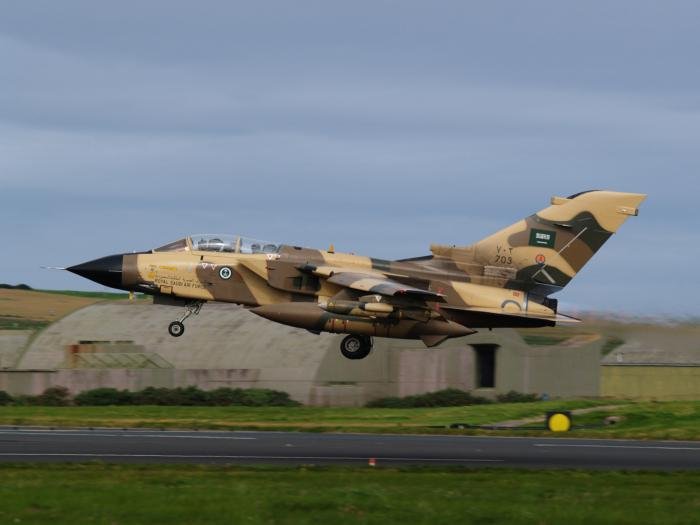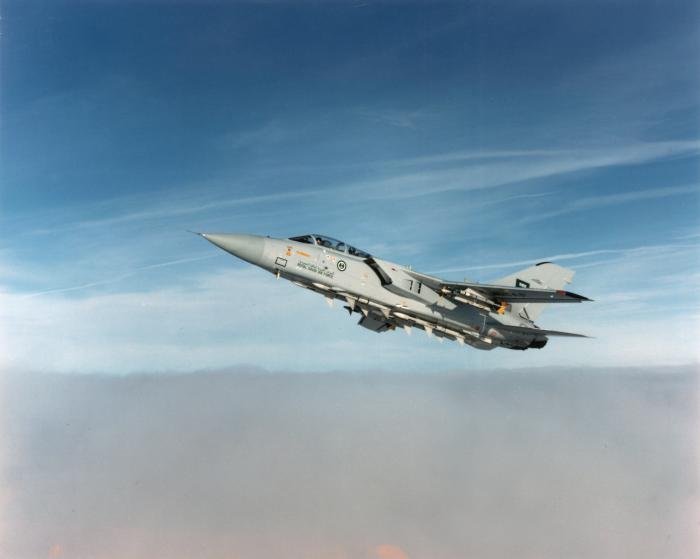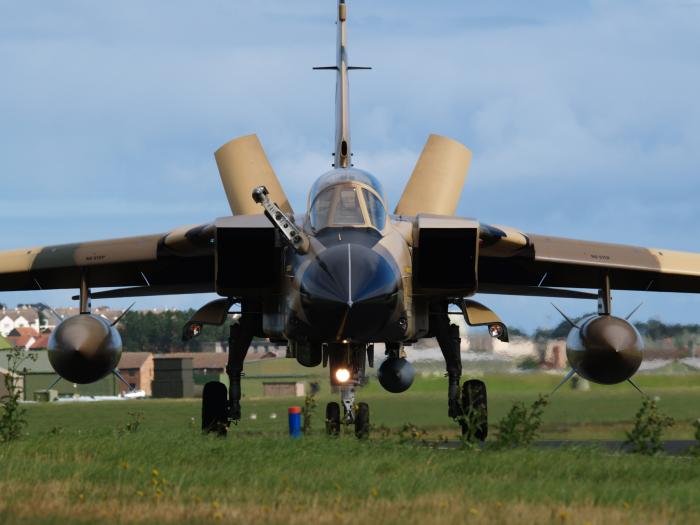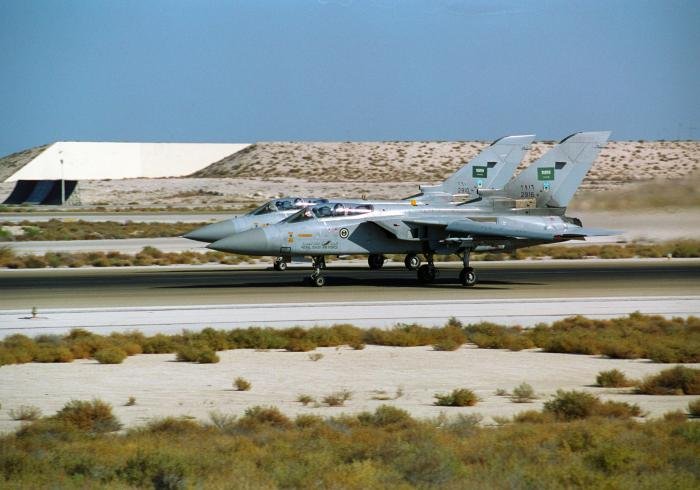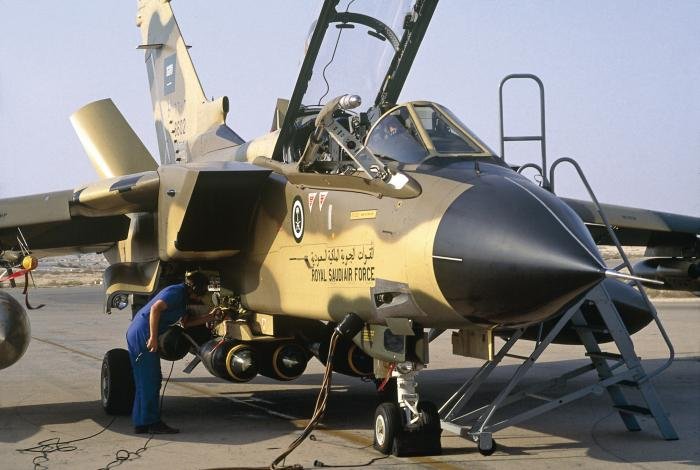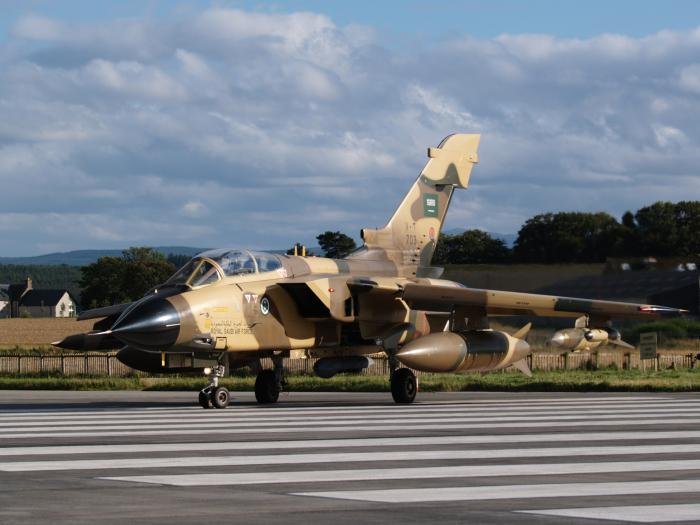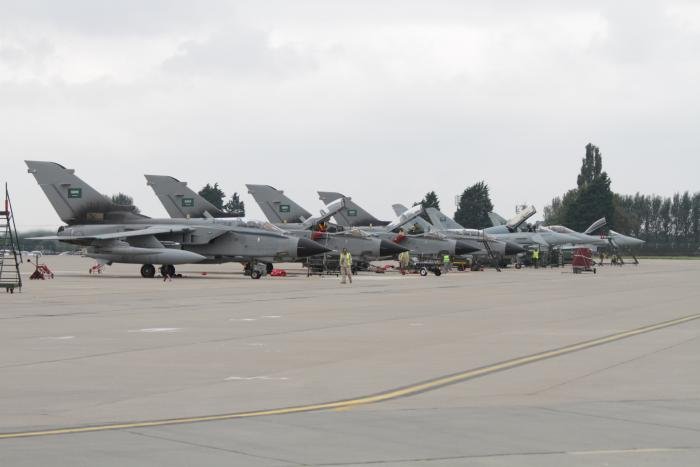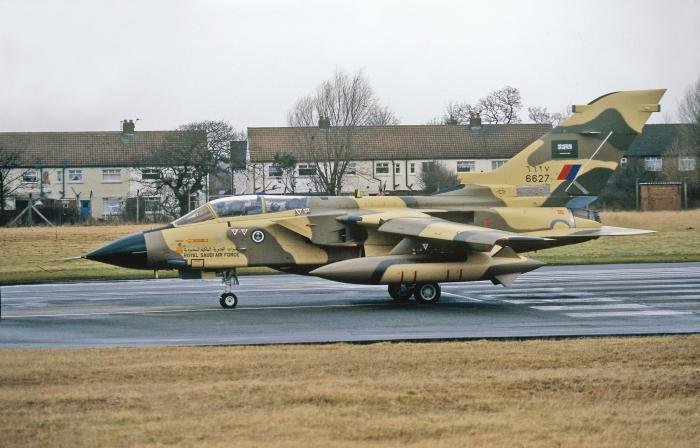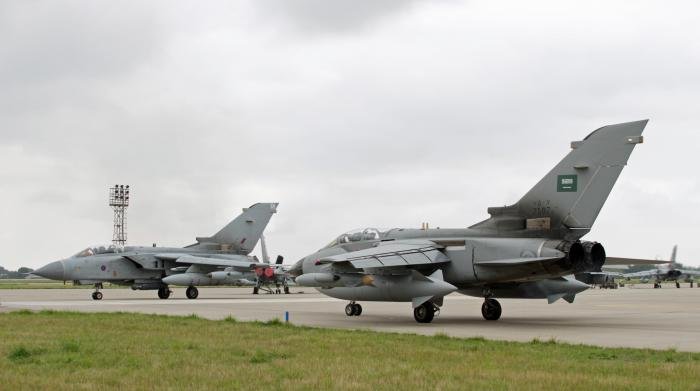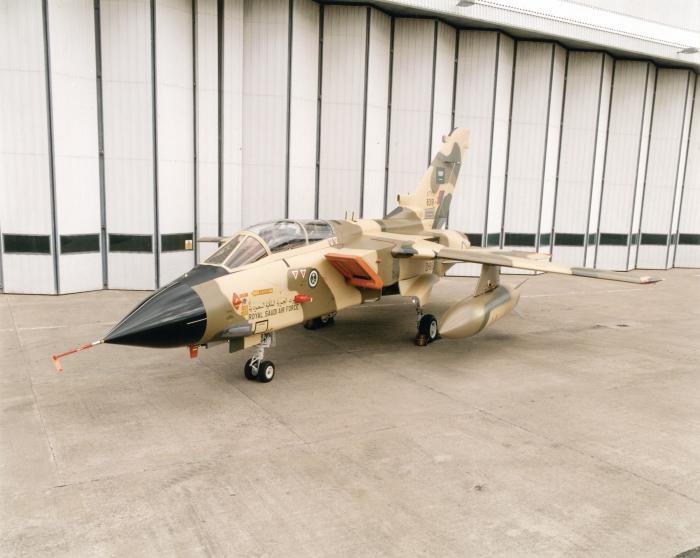Fatman17
THINK TANK: CONSULTANT
- Apr 24, 2007
- 35,719
- 42,193
- Country of Origin

- Country of Residence

AN IN-DEPTH LOOK AT SAUDI ARABIA'S ADVANCED F-15SA FLEET
- Aviation Features
- An in-depth look at Saudi Arabia's advanced F-15SA fleet
By Khalem Chapman 15th January 2021
FEATURE
Key.Aero provides an in-depth look at Saudi Arabia’s Boeing F-15SA (Saudi Advanced) Strike Eagle fleet and charts the delivery of its 84 new-build multi-role fighters over the last five years.
On December 10, 2020, the Royal Saudi Air Force (RSAF) received its final batch of new-build F-15SAs. The delivery marked the completion of a Foreign Military Sale (FMS) contract – worth US$29.4bn – for 84 examples of the advanced multi-role fighter, which was signed in October 2010.
![F-15SA [USAF/Staff Sgt Justin Parsons] F-15SA [USAF/Staff Sgt Justin Parsons]](https://fullfatthings-keyaero.b-cdn.net/sites/keyaero/files/inline-images/Boeing%20F-15SA%20Strike%20Eagle%20%5BUSAF%20-%20Staff%20Sgt%20Justin%20Parsons%5D%201.jpg)
By the time that this FMS contract was signed, Saudi Arabia was already a well-established Eagle operator in the Middle East, having employed the F-15C/D since 1982 and the F-15S (Saudi) Strike Eagle since 1995. The 2010 deal was an exceptionally large one, covering not only the delivery of new-build aircraft, but also the upgrade of 70 examples of the RSAF’s F-15S fleet to F-15SA standard. It also included a vast amount of related systems, munitions and equipment.
The F-15SA
Boeing’s F-15SA is an advanced version of the Strike Eagle, incorporating features from, and building on South Korea's F-15K Slam Eagle, Singapore's F-15SG and the company's F-15SE Silent Eagle. It boasts a number of enhanced systems and structural improvements when compared to the basic F-15S used by the RSAF.
Powered by two GE Aviation F110-GE-129 afterburning turbofans, the F-15SA employs a fly-by-wire flight control system (which allows the reactivation of additional underwing pylons - stations one and nine), advanced cockpit displays and Raytheon’s AN/APG-63(V)3 active electronically scanned array (AESA) radar. The aircraft has a structurally redesigned wing, and a new nose barrel.
It also features a BAE Systems-developed digital electronic warfare system/common missile warning system (DEWS/CMWS); Lockheed Martin’s AN/AAS-42 infrared search and track (IRST) system; a Joint Helmet Mounted Cueing System (JHMCS) and a Link-16 multifunctional information distribution system (MIDS). The platform can be equipped with Lockheed Martin’s AN/AAQ-33 Sniper advanced targeting pod (ATP), as well as the firm’s AN/AAQ-13 Low Altitude Navigation and Targeting Infrared for Night (LANTIRN) system.
![F-15SA [USAF/Senior Airman Isaiah Soliz] F-15SA [USAF/Senior Airman Isaiah Soliz]](https://fullfatthings-keyaero.b-cdn.net/sites/keyaero/files/inline-images/Boeing%20F-15SA%20Strike%20Eagle%20%5BUSAF%20-%20Senior%20Airman%20Isaiah%20Soliz%5D%201.jpg)
In terms of munitions, the F-15SA can employ a number of weapons when configured for both air-to-air and air-to-surface operations. In an aerial combat role, it can carry the AIM-9X Sidewinder short-range air-to-air missile and the AIM-120C-7 Advanced Medium-Range Air-to-Air Missile (AMRAAM). The multi-role fighter is also fitted with a single M61 Vulcan 20mm cannon.
For air-to-surface engagements, the aircraft can be fitted with the AGM-84H/K Stand-off Land Attack Missile-Expanded Response (SLAM-ER) precision-guided, air-launched cruise missile. It can also carry the AGM-88 High-speed Anti-Radiation Missile (HARM); GBU-24 Paveway III laser-guided bomb and Joint Direct Attack Munition (JDAM), as well as Mk.82 500lb and Mk.84 2,000lb general purpose bombs.
According to Boeing, its family of advanced F-15s – which includes Saudi Arabia’s SA variant – can carry up to 12 air-to-air missiles and 24 air-to-ground munitions.
The F-15SR
Despite having now received its full complement of new-build F-15SAs from Boeing, the RSAF will continue to receive examples of the advanced Eagle. These will be aircraft converted from their previous F-15S standard under the F-15SR (Saudi Retrofit) programme, using new structural sub assemblies produced in-Kingdom. In RSAF service, the aircraft that undergo this upgrade are likely to be designated the F-15SR.
The first two F-15S pattern aircraft to undergo this conversion were returned to the RSAF in December 2016, when they were delivered to Saudi Arabia alongside the initial pair of new-build F-15SAs. These two aircraft were converted to SA standard at Boeing’s facility in St Louis, Missouri – one by Boeing personnel and the other by a Saudi team from Alsalam Aerospace Industries (AAI).
Only the first two conversions were to take place in the US, with the remaining examples undergoing the process locally in Saudi Arabia. Due to recent losses, the number of F-15S’ that will be upgraded to SA standard has dropped to 68.
![F-15SA [South Carolina National Guard/Staff Sgt Erica Jaros] F-15SA [South Carolina National Guard/Staff Sgt Erica Jaros]](https://fullfatthings-keyaero.b-cdn.net/sites/keyaero/files/inline-images/Boeing%20F-15S%20%5BSouth%20Carolina%20National%20Guard%20-%20Staff%20Sgt%20Erica%20Jaros%5D.jpg)
AAI accepted its first F-15S for in-country conversion on October 21, 2018 and anticipates that the final F-15SR will be handed over to the RSAF by June 2026. The first locally upgraded aircraft (serial 5502, formerly 93-0854) completed its first functional check flight (FCF) from Riyadh International Airport in Saudi Arabia on January 15, 2020 – a year ago today.
The Saudi-based company has now received at least ten F-15S’ from the RSAF and will continue to convert them to F-15SR-standard until all 66 aircraft have undergone the process. Under the programme, AAI is responsible for the upgrade and also manufactures new wings, forward fuselages, pylons and adaptors for the F-15s. The production of some specific avionics components is being covered by Riyadh-based Advanced Electronics Company (AEC).
Interestingly, some 50 F-15S wing sets are to be sold to the USAF to support its own F-15E modernisation effort. Realising that the RSAF F-15S to SA conversion would entail the removal and disposal of the F-15S aircraft's existing low-hour, low-fatigue wings, the US Air Force Life Cycle Management Center (AFLCMC) negotiated to buy eight wing sets initially. These first eight F-15S wing sets were delivered to Robins Air Force Base (AFB), Georgia, in August 2020, where they were refurbished prior to installation on USAF F-15Es. The USAF has declared a requirement for at least 42 further otherwise redundant wing sets.












